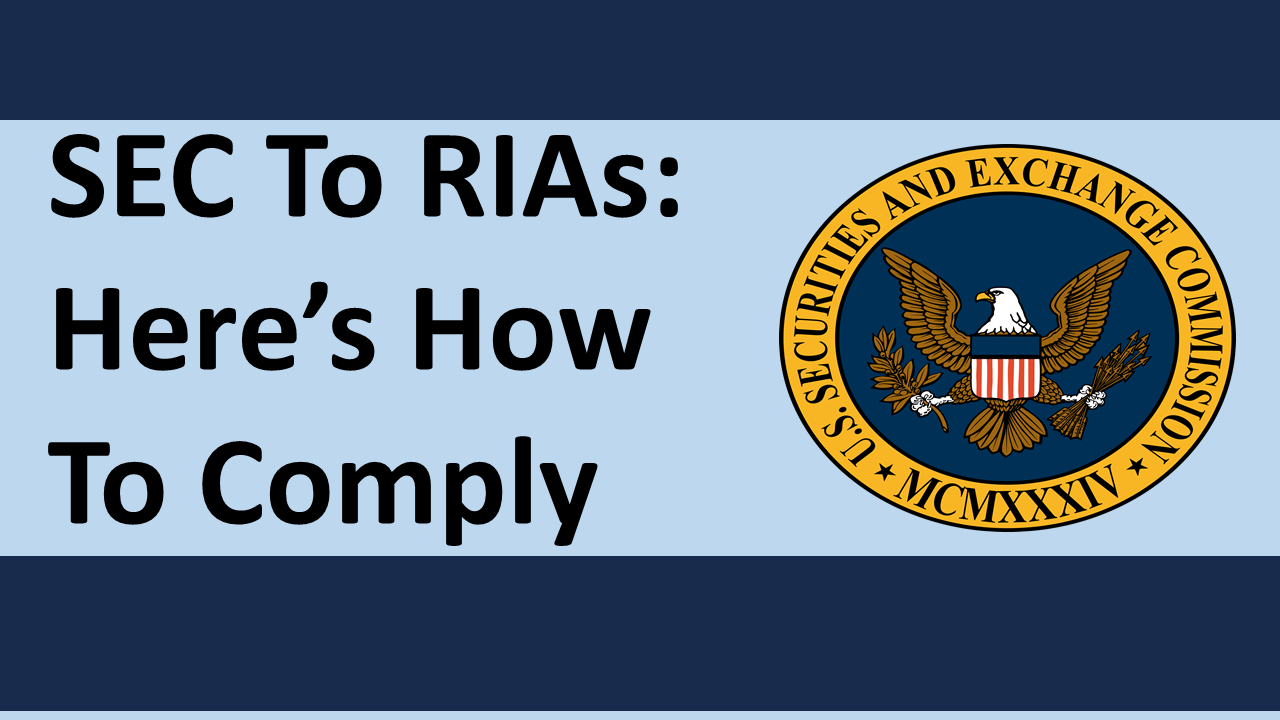Give States Oversight And Examination Authority Over RIAs Managing $1 Billion Or Less To Solve The RIA Regulatory Mess Hot
Like FINRA, states already have systems to regulate RIAs. In fact, based on recent history, the states are probably far more efficient than FINRA at regulating RIA. The states and NASAA have done an exemplary job of handling “the switch” that began in 2010. It’s an example where government has worked well. Moreover, it avoids the need to create a new self-regulatory organization and leverages existing regulatory structure for RIA oversight, whichs keeps the cost of regulation down.
The switch, a term I coined in September 2010 to describe the regulatory shift set in motion in July 2010 by the Dodd-Frank Act, moved 2,500 RIAs managing $115 billion from SEC oversight to state oversight. The Act was an effort to ease the burden on the SEC.
According to Bob Webster, spokesman for the North American Securities Administrators Association (NASAA), states have handled the switch much more easily than expected.
Last week, a letter went out to 20 RIAs that states identified for failing to make the switch to state regulation, marking the final chapter in completing the three year process. The switch of the 2500 RIAs has been completed and it has gone well. According to Webster, “the impact was not as great as anyone expected.”
“We originally had planned for about 4,000 RIAs to come over to state regulation, but only about 2,400 actually made the switch,” says NASAA’s Webster. “It’s not placed a tremendous burden on any individual state. Members prepared for it and those that needed additional staff and have gotten staffing, and I have not heard of any state being swamped or deluged because of the switch.”
Since the states have assumed oversight responsibility for these 2,400 RIAs without so much as a hiccup, why not let them regulate RIAs with less than $1 billion AUM? Doing so would materially simplify the regulatory burden on the SEC and allow the SEC to focus resources on hedge funds and private partnerships, and more faithfully fulfill the intent of the Dodd-Frank Act.
Backstory
Passed in July 2010, the Dodd-Frank Act, was supposed to clean up regulation of financial services. Instead, it has heaped more responsibility on an already-strained SEC, which is responsible for nothing less than assuring investor trust.
Before Dodd-Frank became law, the SEC’s Office of Compliance Inspection and Examinations (OCIE) inspected an RIA, on average, once every 10 years or so. A guy like Bernie Madoff could play the odds that he’d never get inspected. If you wanted to be a crooked RIA, the SEC’s lax inspection system made it pretty easy. Dodd-Frank was intended to fix that. It switched 2,500 small RIAs to state regulation to ease the SEC’s burden. The SEC would oversee RIAs with more than $100 million AUM instead of $25 million.
Trouble is, the 2,500 RIAs switched over to state regulation have been replaced by a new class of RIA registrants: hedge funds and private equity funds. According to Congressional testimony from SEC Chair Elisse Walter recently, the 2,500 RIAs managing $115 billion have been replaced with 1,500 private equity funds managing $3 trillion. These new registrants are arguably 25 times more complex than 2,500 RIAs with $115 AUM. Creating a credible exam program for them is far more chllenging.
The upshot: Dodd-Frank, which was supposed to fix regulatory weaknesses that contributed to the financial crisis, has actually made RIA regulation a much bigger problem than it was before the financial crisis.
But you can’t fault lawmakers or the law. Dodd-Frank is necessary. Unregulated financial activities were a major cause of the financial crisis, which started in the U.S. and almost brought down the world financial system as well as the U.S. economy.
Helping The SEC
Separating “mom and pop” RIAs advising individuals from much institutional investment advisors makes sense because RIAs managing money for individuals are in a totally different business than hedge funds and private equity firms that now command the SEC’s attention. Examiners need totally different forensic skills to examine this new class of RIAs. Meawnhile, states have proven adept at handling the increased responsibility of mom and pop RIAs.
Keep in mind, the SEC is a profit center for the federal government. Uncle Sam makes money on fees and penalties imposed on entities it regulates. Problem is, Congress doesn’t give the SEC back much of the money it raises in fees and penalties. The SEC is always starved for cash to pay for doing its job. That’s the way Congress wants it.
States are not hogtied by Congress and Wall Street influence. While the SEC was handicapped by the federal government’s need for revenue, states are more free to make money on regulating RIAs. Allowing the states, instead of the SEC, to collect fees and penalties associated with regulating RIAs could efficiently finance the regulation of RIAs. Registration fees and penalties from RIAs could easily offset the cost of a team of hiring five or 10 young lawyers to police a state’s RIAs while creating a credible deterrent that protects consumers from crooked advisors.
More complex RIAs with less than $1 billion would remain under SEC purview if they conduct business in 15 or more states. That rule, already in place, seems to be working well and could continue to keep RIAs with far flung operations under SEC supervision.
What do you think? Would putting states in charge of regulating RIAs with less than $1 billion help solve the RIA regulatory mess?
Would state regulation be a better alternative than leaving the job to the SEC and making SEC-regulated RIAs pay user fees, which has been proposed by the groups representing RIAs?
Based on the states' track record in implementing the switch, it sure looks that way.
This Website Is For Financial Professionals Only
 Plain-English Translation Of SEC Official's Speech To RIA CCOs
Plain-English Translation Of SEC Official's Speech To RIA CCOs RIA Data Security Webinar By Compliance Whiz Chris Winn Receives A 4.7 Rating From Attendees
RIA Data Security Webinar By Compliance Whiz Chris Winn Receives A 4.7 Rating From Attendees 2014 RIA Compliance: 23 Questions From Advisors And Answers
2014 RIA Compliance: 23 Questions From Advisors And Answers Questions About ByAllAccounts And When Account Aggregation Of 401(k) Assets Triggers Onerous Custody Rules Become Focus Of Webinar About 2014 SEC Examination Priorities For RIAs
Questions About ByAllAccounts And When Account Aggregation Of 401(k) Assets Triggers Onerous Custody Rules Become Focus Of Webinar About 2014 SEC Examination Priorities For RIAs









